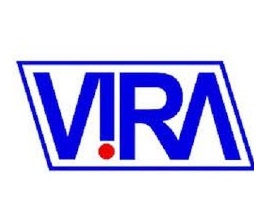About Safety Relief Valves
Pressure safety relief valve is applied to keep the pressure of the system or pressure containing parts through the over pressure scenarios to obtain the purpose of preventing the pressure from exceeding the specific valve. When the operating pressure inside the pressure system or pressure vessel exceeds the set pressure of the pressure relief valve, the valve will open automatically and discharge the excess flowing fluid. When the system pressure reduces to the normal pressure, the valve will automatically re-close, which will prevent the medium from keeping to be discharged, resulting in excessive waste of media in the system.
The unstable operation of the safety relief valve causes unbelievable harm, which is mainly described as follows: reduction of discharge capacity, insufficient function of constant pressure regulation or overpressure protection and the resonance of the whole pipeline system, or the serious damage to the sealing area of the safety relief valve. So that proper operation of the safety relief valves is very important problem for all clients in oil & gas industries. Because proper operation of safety relief valves guarantees safety of the system and prevents from terrible events.
Our role in this operation
So that, VIRCO as the designer and manufacture of all kinds of safety relief valves is trying and studying day by day to increase quality of products to guarantee proper operation of its safety relief valves.
All related codes such as ASME SEC. I, VIII and XIII and related standards such as API 520, 521, 526, 527, ISO 4126 (Part 1 to Part 10) are followed by VIRCO. Other standards will be followed upon client’s request.
our products
VIRCO products are categorized through 8 different series in both spring loaded and pilot operated types.
VIRCO safety valves are developed to compete with well-known brands in international markets. Production, with a capacity of over 3,000 valves a year, takes place at our factory in ARAK
Type of Pressure Relief Device
Some terminology in the field of safety valves
Overpressure The pressure increase over the set pressure of the relieving device. Overpressure is expressed in pressure units or as a percentage of set pressure. Overpressure is the same as accumulation only when the relieving device is set to open at the MAWP of the vessel.
Blowdown The difference between the set pressure and the closing pressure of a pressure-relief valve expressed as a percentage of the set pressure or in pressure units.
Back pressure The pressure that exists at the outlet of a pressure-relief device as a result of the pressure in the discharge system. Backpressure is the sum of the superimposed and built-up backpressures.
Chatter The opening and closing of a PRV at a very high frequency (on the order of the natural frequency of the valve’s spring mass system). In chattering disk contacts the seat (nozzle).
Flutter The abnormal, rapid reciprocating motion of the moveable parts of the PRV. During the fluttering, the disk does not contact the seat or the upper stop.
Cycling The relatively low frequency (a few cycles per second to a few seconds per cycle) opening and closing of a pressure-relief valve.
CDTP (Cold Differential test pressure) The pressure at which a pressure-relief valve is adjusted to open on the test stand. The CDTP includes corrections for the service conditions of backpressure or temperature or both.
Lift The actual travel of the disc from the closed position when a valve is relieving.
Huddling chamber An annular chamber located downstream of the seat of a pressure-relief valve for the purpose of assisting the valve to achieve lift.
Rated relieving capacity The basis for the application of a pressure-relief device. This capacity is determined in accordance with the applicable code .or regulation and is provided by the manufacturer.
Set pressure The inlet gauge pressure at which the pressure-relief device is set to open under service conditions.
Simmer The audible or visible escape of compressible fluid between the seat and disc of a pressure-relief valve that may occur at an inlet static pressure below the set pressure prior to opening.
Closing Pressure The value of decreasing inlet static pressure at
which the valve disc reestablishes contact with the seat or at which lift
becomes zero as determined by seeing, feeling or hearing.



